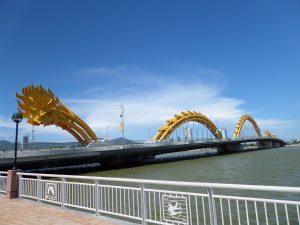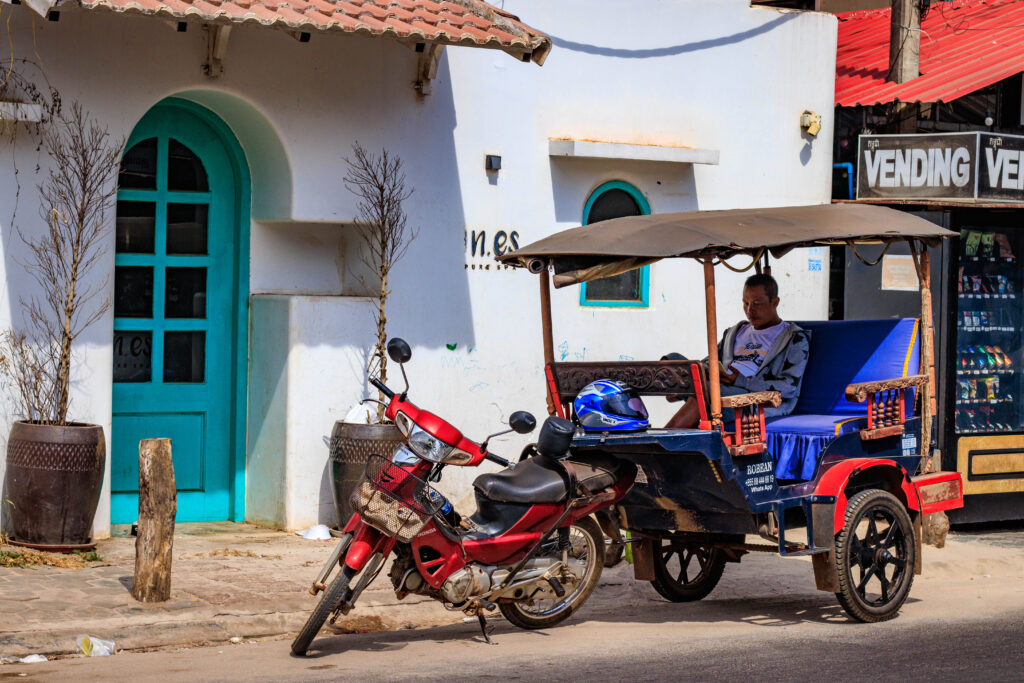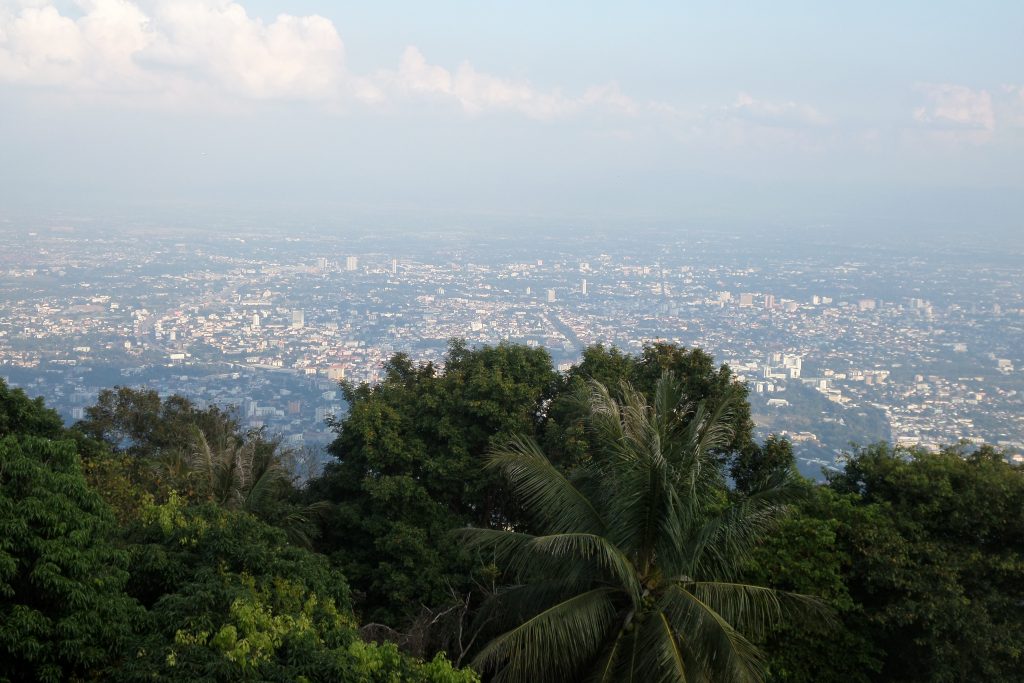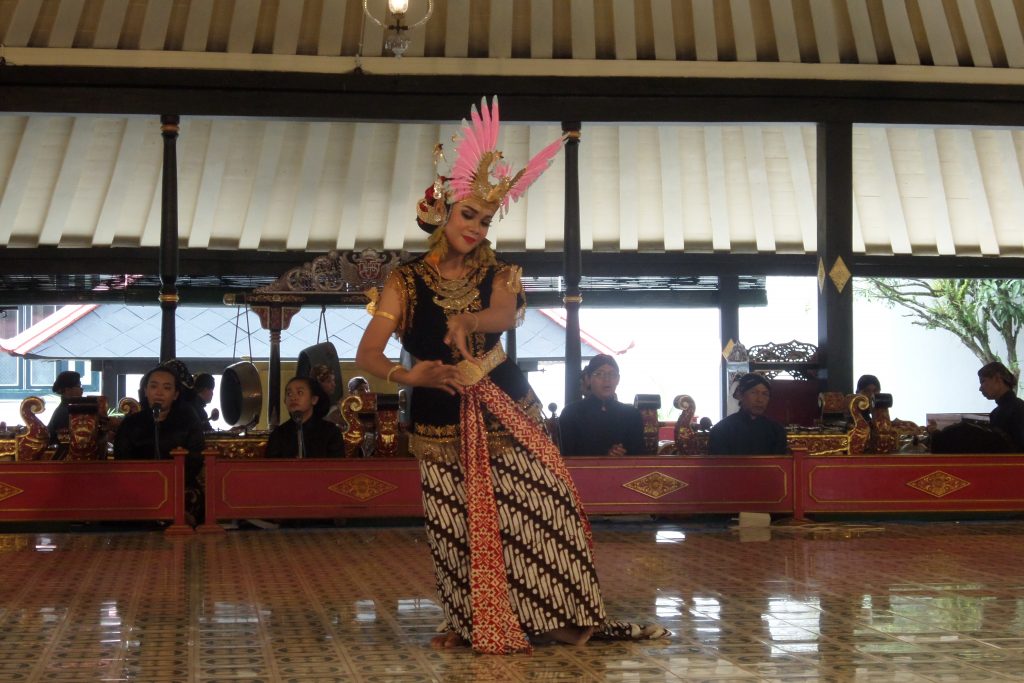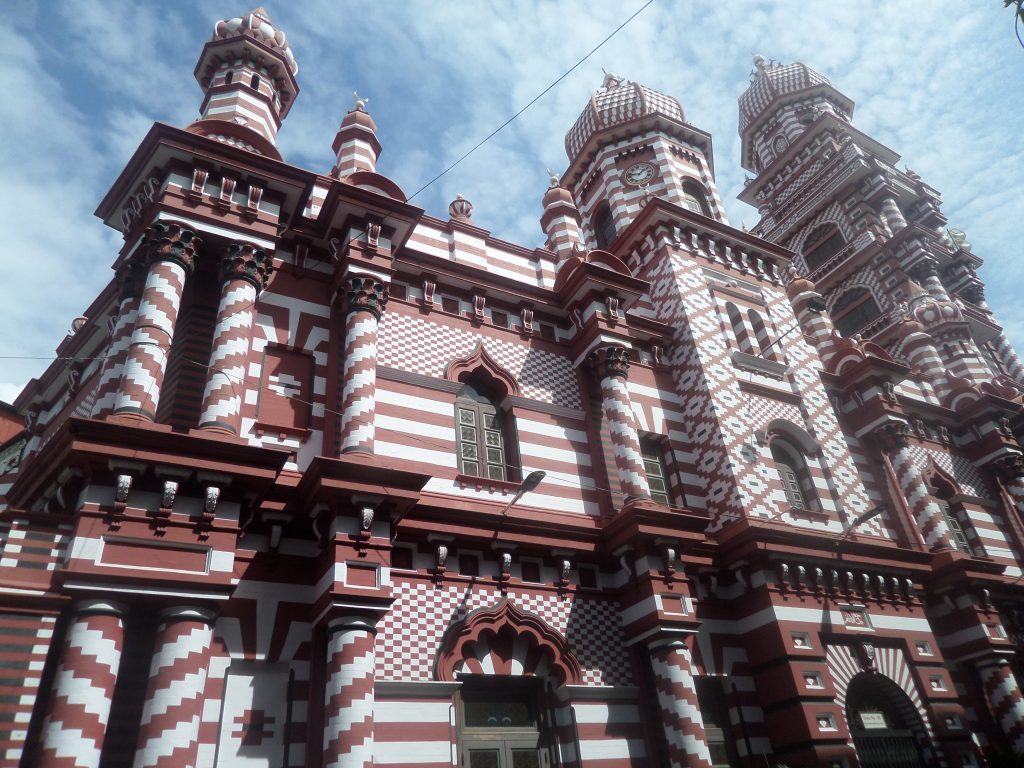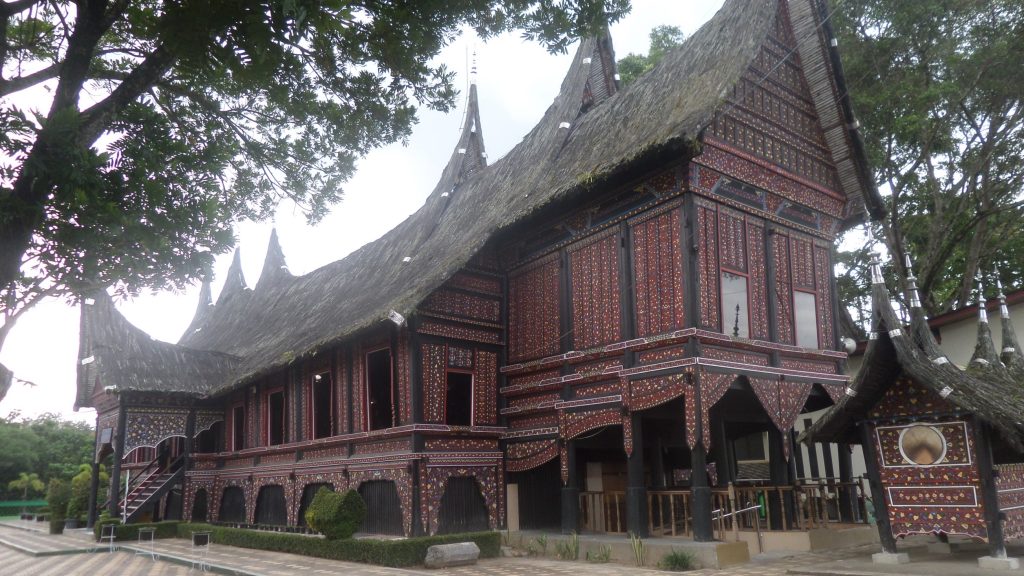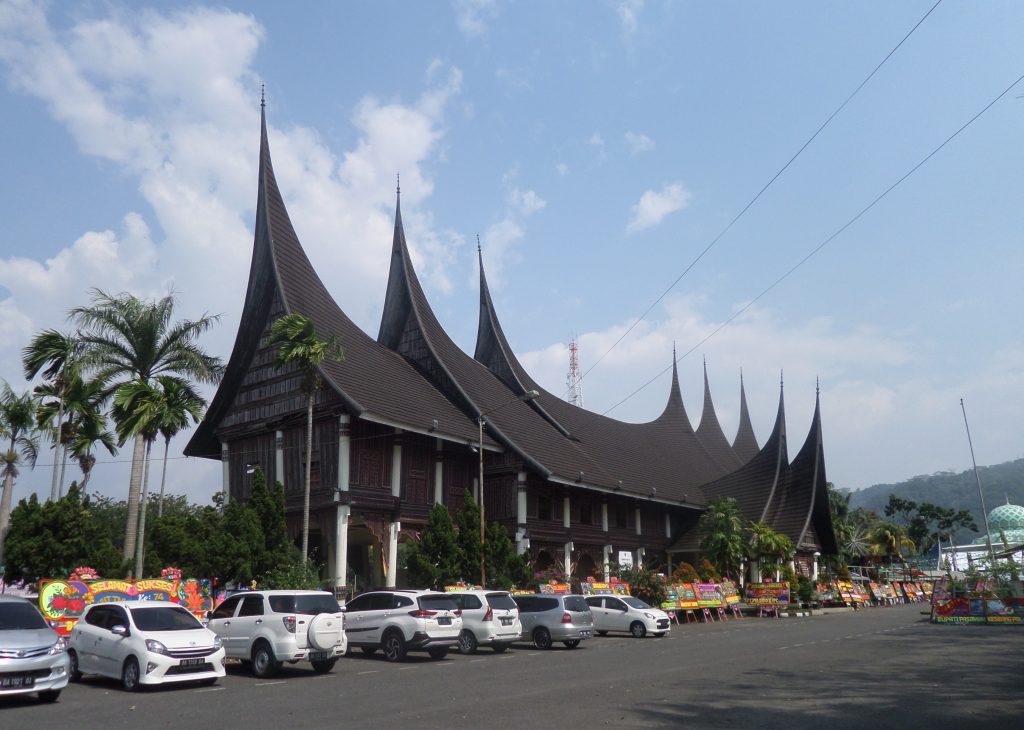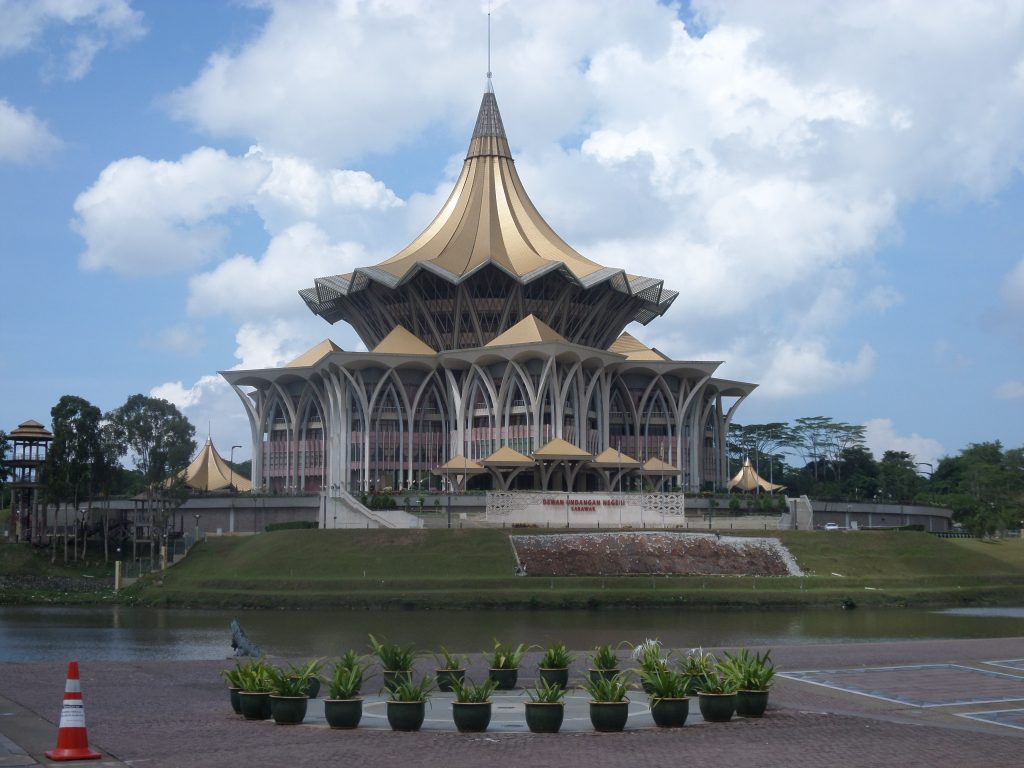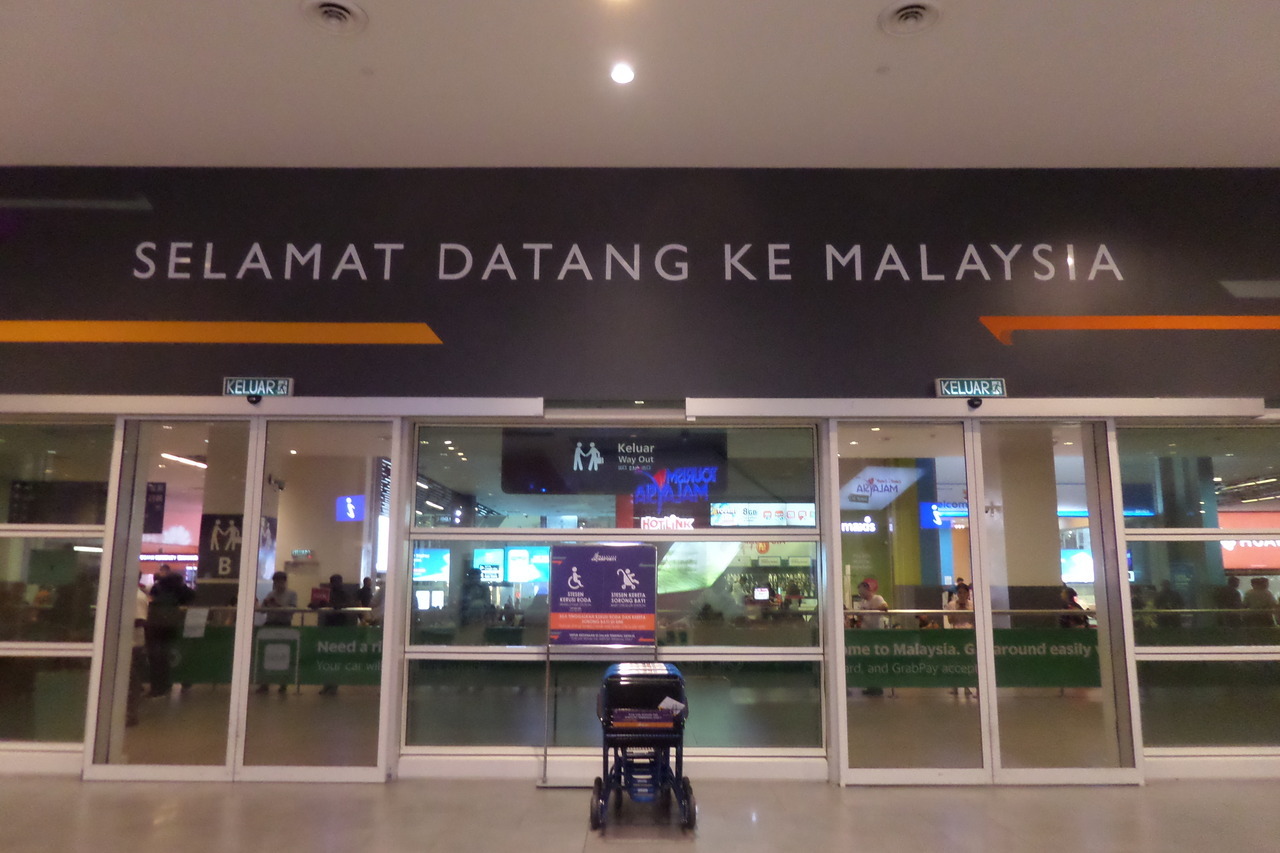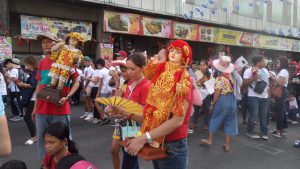In the Digital Nomad City Ratings series, I review the cities where I was working as a digital nomad. The possible ratings are 0 (awful) to 10 (exceptionally wow). The ratings are of course exclusively based on my personal experience and preferences. These may be different for other people, but besides the ratings, I will share my experiences and a detailed description, so this will hopefully be helpful for you too.
A few notes on the not necessarily self-evident categories and their ratings:
Internet: I don’t need very fast internet, but I need continuous connection.
Prices: I am a budget traveller. People who earn higher salaries may have a very different perspective on costs.
Walkability (a standard point in almost all digital nomad listings – you will understand why when you start your digital nomad life) How easy/comfortable/safe/interesting is it to walk about/stroll in the city
Infrastructure: Are there sufficient and good quality services like hospitals, malls, possibilities to arrange official matters, pharmacies, trains, buses etc?
Sights & Surroundings: Options to visit places of interest nearby, especially if staying for a longer time in the city.
Visa: Can you stay in the country without a visa? If so, how long? If not, how easy is it to get a visa and/or extend it? Can you arrange this in the given city?
Overall Impression: I needed this extra category because even if everything is fine in a given city, you may feel something is not right, and you wouldn’t like to stay very long. Or the other way round: it may lack famous sights and infrastructure, but you still love the place.
This post may contain affiliate links
This post may contain links to products or services. If you follow these links and make a purchase, I will get a small commission, with no extra cost to you. Sometimes you may even get a discount through these links. I never publish links to products or services that I don’t personally think are useful / high quality / reliable; and in many cases, I myself have used or am using these products or services or the service provider.
1. Introduction
Da Nang is one of the best cities for digital nomads in Vietnam. It is in the middle of the country on the coast, and has everything most digital nomads will want during a few months’ stay, including entertainment, sights, friendly locals, low prices and good accommodation options.
Da Nang doesn’t see a lot of international tourists, at least not many western visitors. But it is fast becoming a tourist spot, so if you want to enjoy it without the hordes of tourists and experience the authentic local culture, this is the time to go.
2. Internet: 7
I stayed in a place that I booked on Airbnb, and it had excellent Wifi connection. Fast enough for me to manage uploading images and videos, and do whatever I needed to do online. Although at times, I had to reconnect to the network to regain connectivity, but that might have been due to the router perhaps. In any case, I had no major problem with it.
You can easily buy a local SIM card, which I only did after spending a few days in the city. You should do that first thing after arrival, because even if you have internet connection in you home, you will need data in the streets – for example, to use Google Translate (see below, at “people and communication”).
Many cafés will have free wifi, and all the places that I frequented had very good internet connection, at least it was enough for me to do my job online, which doesn’t involve transferring very large files. You’ll find very pretty looking cafés all over the city: Vietnam has a very developed café culture.
There are also quite a few coworking spaces in Da Nang, including DNC, but I was perfectly happy with the cafés, which looked much better, had excellent (and cheap: 10.000 vnd) espresso, and I could do some people watching when I got tired of working. I am basically not very much into coworking spaces. I think they are very expensive and they don’t give me enough value for that money. If you are trying to meet other digital nomads, however, these places are certainly some of the best for that.
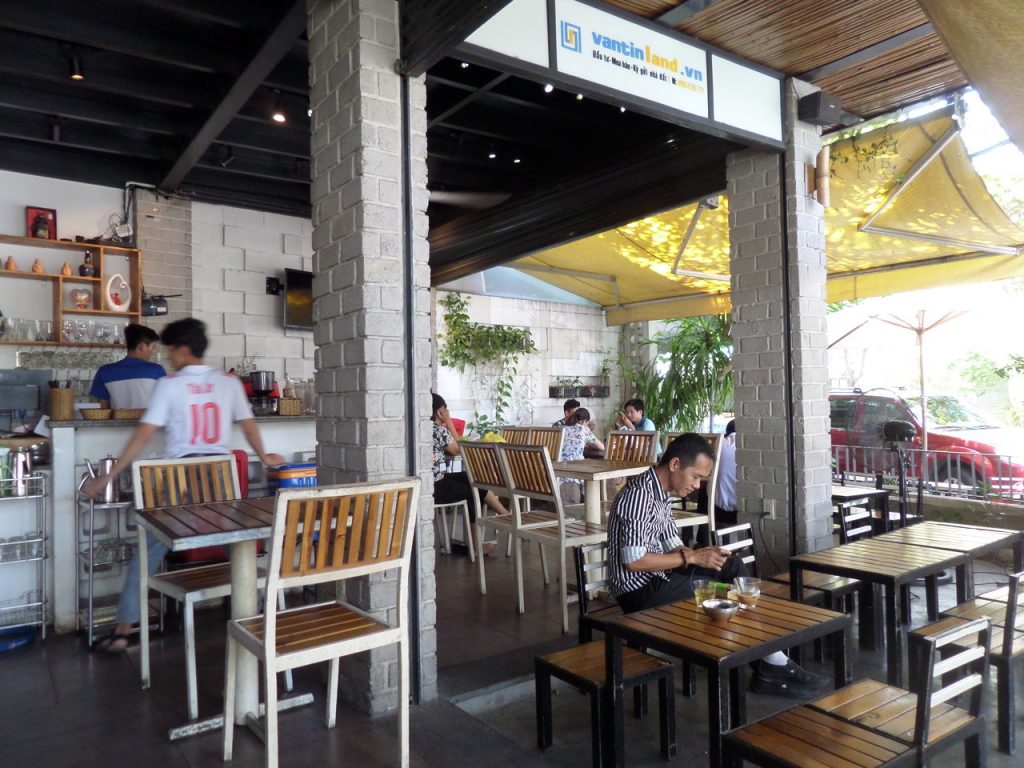
3. Prices: 10
Vietnam in general has very reasonable prices, but some hot tourist spots like Hue or Hoi An, will be more expensive. Da Nang, however, is very budget friendly. You can have a meal at a simple eatery for as little as 25.000 dongs, but even if you opt for a proper restaurant, you are not likely to be charged more than a hundred (for a comparison: in other major tourist destinations in the country, food prices will start at one hundred thousand in a restaurant).
Fruit, vegetables and supermarket prices are also very friendly, unless you want to buy “exotic” fruits like apples or pears, which will be incredibly expensive – this is not surprising though, you will similarly pay a lot for mangoes or papayas in Europe, which in turn are very cheap (and delicious!) over here.
Accommodation prices are also good, whether you want to stay in a hotel or an apartment (see more info about this below).
Tickets to museums, local transport (Grab bikes and cars) are also cheap, similarly to the train or bus tickets if you want to visit famous places nearby, like Hoi An or Hué. (Do take the train if you want to go to Hué: it is one of the most picturesque train rides you can imagine!)
4. People & communication: 7
Vietnamese people are generally nice and friendly, wherever you go in the country, and Da Nang is no exception. You may even find that local people may be a little more interested in meeting you or learning something about you as a foreigner, because they don’t see an awful lot of them (us). When I was walking along the streets a little outside of the city centre, little children greeted me with a “hello” every time I passed a house (those nice detached houses with a garden).
But it’s not only small children who will greet you, and you don’t have to be walking in the suburbs for that. An exchange of smiles and hellos will be common anywhere in the city.
The problem, however, is that you won’t be able to have meaningful conversations with locals unless you learn to speak Vietnamese. Even in larger shops, malls and supermarkets, you are not likely to find shop assistants who speak English. Any English. I once ordered – well, attempted to order – a black coffee. You would expect “coffee” to sound very similar in any language of the world, wouldn’t you? In fact, it really does sound similar in Vietnamese, too (something like “kha-fai”), but the young waitress just couldn’t understand it.
Then shortly after this, at another place, the young waiter boy did understand it, but he brought me coffee with milk and a lot of ice. There was no way I could make him understand that I want it hot and without milk. I asked the guests who were sitting there whether any of them spoke English – no-one did. Then I even asked some of the passers-by (it was a terrace, an open-air café), but we couldn’t find anyone who spoke English, and this was in the very centre of Da Nang,
Since then, I have learnt to say very basic things in Vietnamese, most importantly “hot black coffee”, but you need practice: Vietnamese is a tonal language, where you need to sing the words properly if you want to be understood properly.
And of course: use Google Translate (or whatever translation app you have), this was the only solution in many, many cases for me.
5. Sights and things to do: 8
Da Nang itself has some excellent sights and neighbourhoods that are exciting to walk around, but you also have a lot of options for day trips around Da Nang.
Da Nang is a coastal city, and it has beaches, too. The promenade along the river is a nice place, especially in the evening and at night when there are millions of lights both along the riverside and on the boats, not to mention the bridges. Among them is the famous Dragon bridge, which is equally spectacular during the daytime. You can also walk across the bridge to the eastern side, which is a more relaxed part of the city, and a walk around the area could be interesting. Prepare to be stared at and greeted by local people if you obviously look like a tourist.
There are neighbourhoods with nice little cafés and restaurants, especially around the lakes in the city centre.
My favourite museum in Da Nang was definitely the Museum of Cham Sculpture, but there are a number of other museums from fine art through military to history.
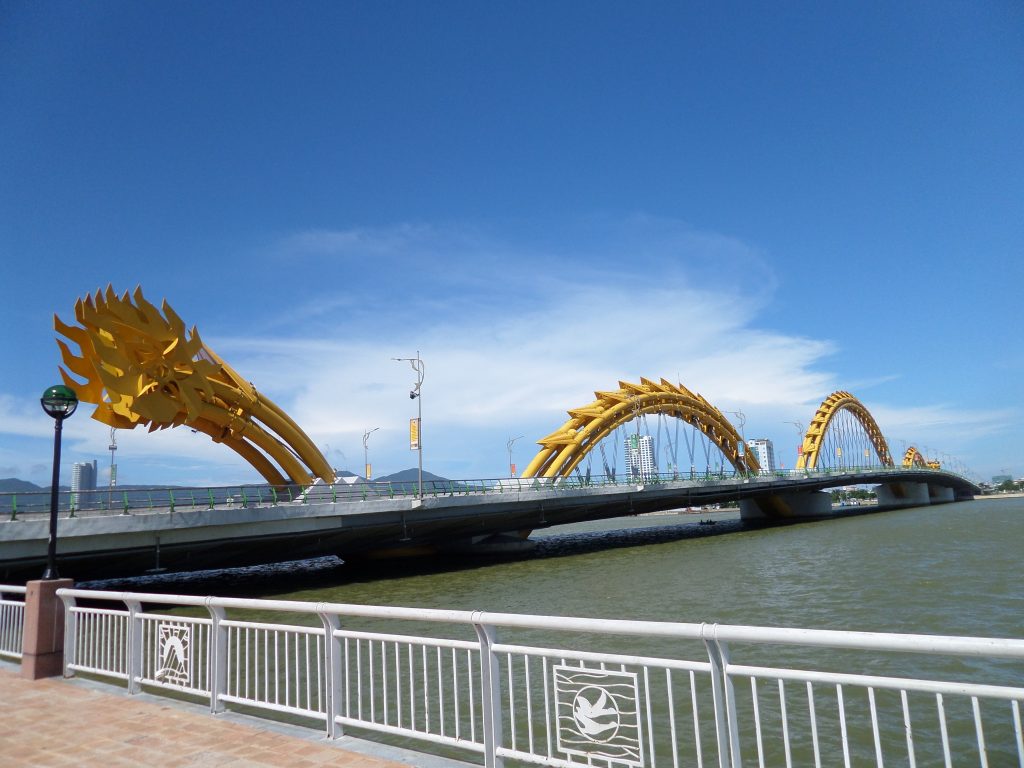
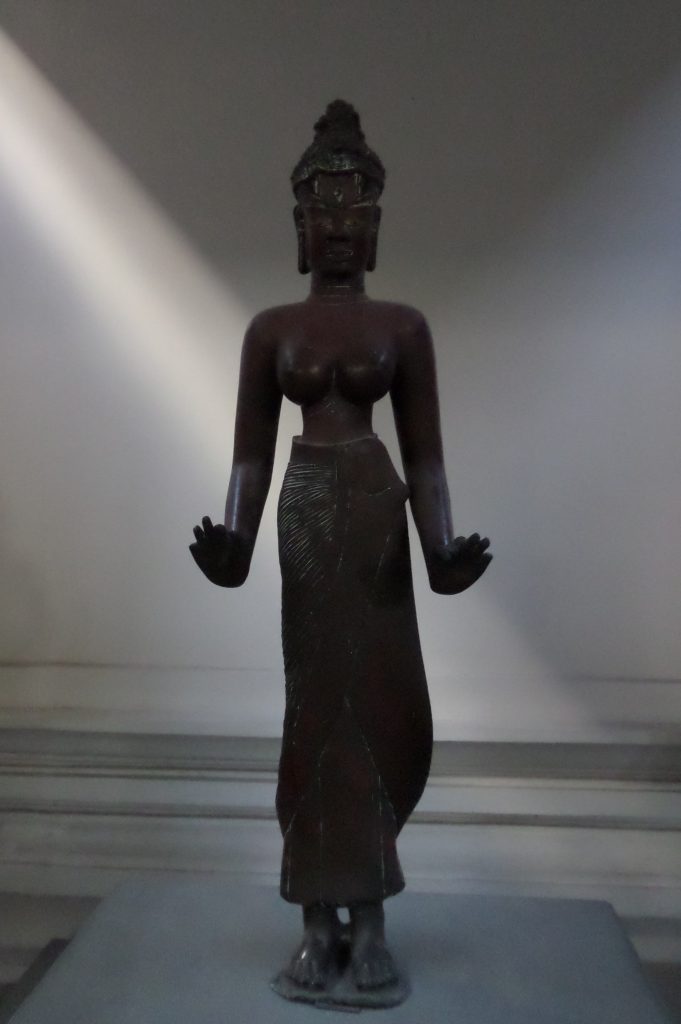
For a day trip, you can visit the spectacular, historical small town of Hoi An, which really looks like a fairy tale in the very centre. It is also a good idea to stay overnight, and enjoy some of the local food in a riverside café or restaurant, and there are clubs there too, mostly frequented by foreign tourists, so if you want to find other visitors, head to one of the clubs there.
Not far from Da Nang is Hué, the ancient capital city, which is a must visit place if you are in the region. I liked it so much, that I actually spent there several weeks after Da Nang. A day trip, however, is not advisable, because it wouldn’t leave you enough time to appreciate what the city has to offer. If you travel from Da Nang to Hué, definitely take the train, and you will have one of the most picturesque train rides along the coastline.
Ba Ná hills is also very near, and a day trip is absolutely possible. There, you will find the famous Golden bridge, the one that is “held” by a giant hand. You can find travel agents in Da Nang that will organise a day trip there from Da Nang, for a hundred or so dollars.
My Son (pronounced “mee sawn”), the ancient sanctuary is not very far either, although most people will visit it from Hoi An, but it is possible to join a tour from Da Nang, too.
6. Walkability: 6
Vietnamese streets are (in)famously terrible for walking. Even if they happen to have pavements, most often they will be blocked by parking motorbikes, vendor stalls, or simply by rubbish put out onto the street (rubbish collection is organised in this way: you simply throw out the bags or rubbish onto the street). This means that most of the time, you will have to negotiate your way on the roadside in the usually crazy traffic. Not once did I feel my life in danger because of cars or motorbikes passing by just centimetres away from me.
In Da Nang, it is usually the same, although in the city centre, you will find pavements large enough to accommodate both the above mentioned pavement blockers and pedestrians, but only on the very wide main roads and of course on the promenade on the river bank.
It seemed to me that Vietnamese people simply can’t imagine walking: I saw people jumping on their motorbikes and riding literally fifty metres to get to a shop. So my advice is: always walk very carefully, possibly growing eyes on the back of your head too, if you don’t want to be the victim of some road accident. It luckily never happened to me neither in Vietnam or elsewhere (knock on wood), but then, I am really extremely cautious.
But another important thing is that there is somewhere to walk to. There are nice gardens, lakes, then there is the riverbank where a stroll is a nice activity especially in the evening.
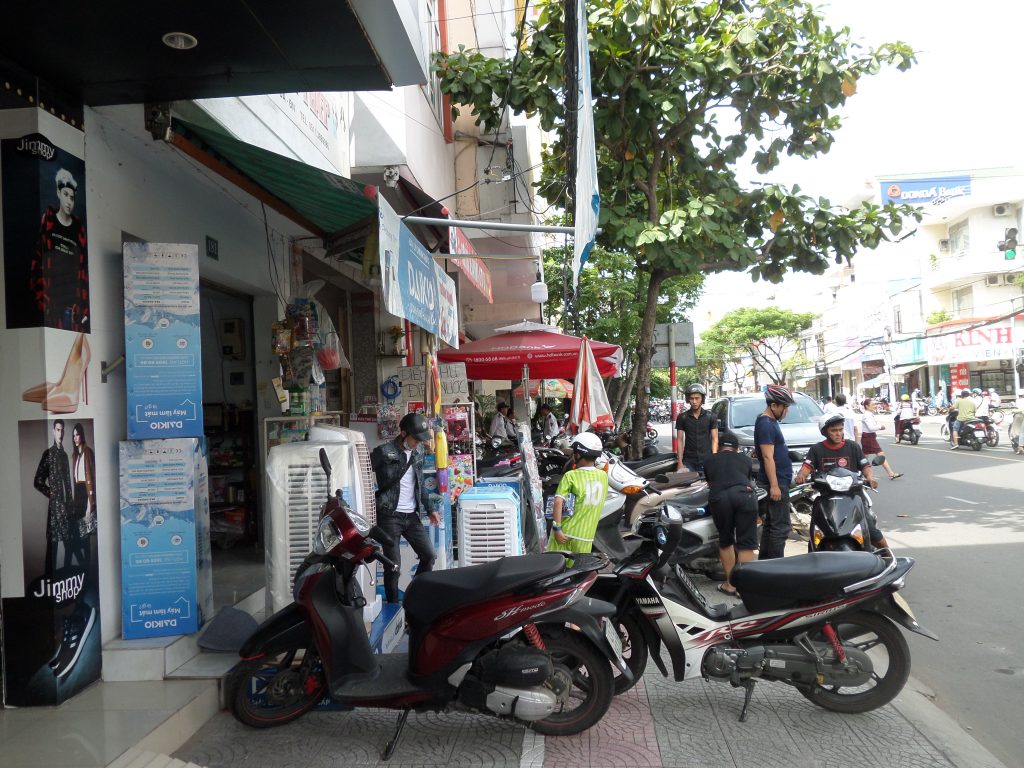
7. Safety: 9
Da Nang is a very safe city, even though it is huge, with crazy traffic. But I never sensed danger – except for the above mentioned problem of trying to walk down the street on the roadside. Common sense should be applied of course. There are bad people everywhere, and you never know when some of them will try to take advantage of you being careless. Like in every big city, I was always careful to hold my shoulder bag on the side where a bag snatcher on a motorbike may not be able to very easily grab it. With that said, I have never heard of anyone being the victim of such attacks.
People look just fine, and I never sensed danger when I was walking in the streets at night, and I did that very often, even in deserted and poorly lit sidestreets. The 9 points out of ten is explained by the dangers you must face when simply walking on the roadside among the millions of motorbikes and cars.
8. Food, self-catering: 7
Vietnamese food is very famous all over the world, and some dishes are very popular with tourists and locals alike. The number one is definitely the pho, which is a soup with either chicken or beef, and is available just about everywhere. The proper Vietnamese spelling is Phở and it is pronounced like “fur” (without the R of course). Some places will serve absolutely delicious pho, while others may have a rather simple version of it, heaven forbid even using instant noodles and instant soup powder – avoid them if you can.
Vietnamese pancakes, the local variant of spring rolls and fried rice are all delicious, and of course the ubiquitous street food, bánh mì, which is a baguette sandwich with fried eggs, paté and vegetables.
Vietnamese cuisine is really varied and colourful, but I have to confess, that Vietnam was the country where I left the food on the restaurant table after the first bite the most often. In some cases, it was a really embarrassing situation, because the small restaurant’s staff was eagerly watching me to see how I like their food…
As for self-catering, I don’t have much experience in that, because I mostly had my meals in restaurants and small food stalls. But I also very often bought baguettes and patés in the supermarkets to make my own bánh mi, and of course lots of local fruits including mango, sugar apple or annona, mangosteen, avocado, guava and lots of other types (wanna play a little game with fruits? Check out this page). Prices are very reasonable for local fruits, baguettes and various liver patés.
9. Infrastructure and services: 8
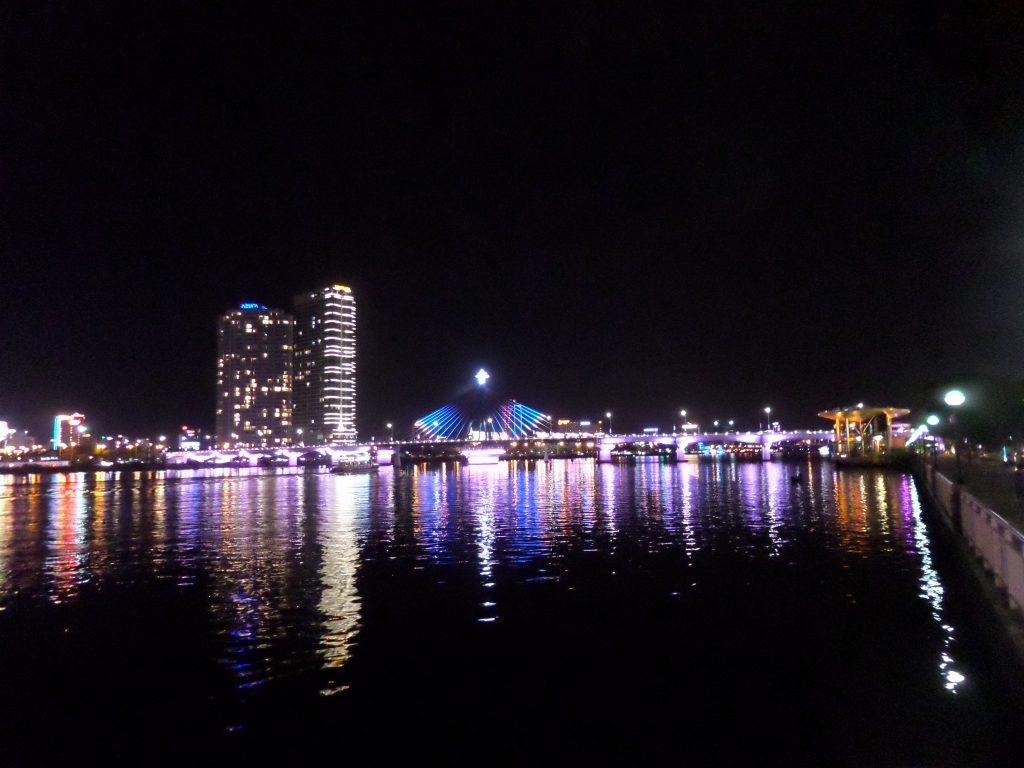
Da Nang is a large city, with more than one million inhabitants (closer to 1.5m, I think). It is a modern city with large malls, a lot of specialised shops and various services. It also has an international airport, what’s more: it is one of the very few cities in the world where you can actually walk to the airport from the city centre – although with a lot of luggage, you’ll be better off if you take a taxi, they are cheap.
I luckily never needed medical help, but there are some private hospitals and clinics in the city, which will certainly be able to take care of your basic needs. However, if you need some more serious treatment, most sources (even insurance companies) recommend that you should find a clinic in the two internationally “accepted” centres in the region: Bangkok or Kuala Lumpur. Dental care should be OK, although I didn’t use it in Da Nang. But I used the services of Serenity Dental Clinic in Hanoi, which was very good with reasonable prices, and they also have a clinic in Da Nang.
Public transport is basically nonexistent, so you will have to rely on taxis. I always used Grab, and the good thing is that in Vietnam, you can also call a motorbike taxi.
Shopping is good in the city centre, but not outside of it. You will find those tiny family shops everywhere, but they are only good for water, snacks, chocolate and other smaller things. Big C Supermarket is in the very centre, and that is a place where you will be able to find whatever you need. The largest market is also nearby, together with clothes shops, electronics and computer shops etc.
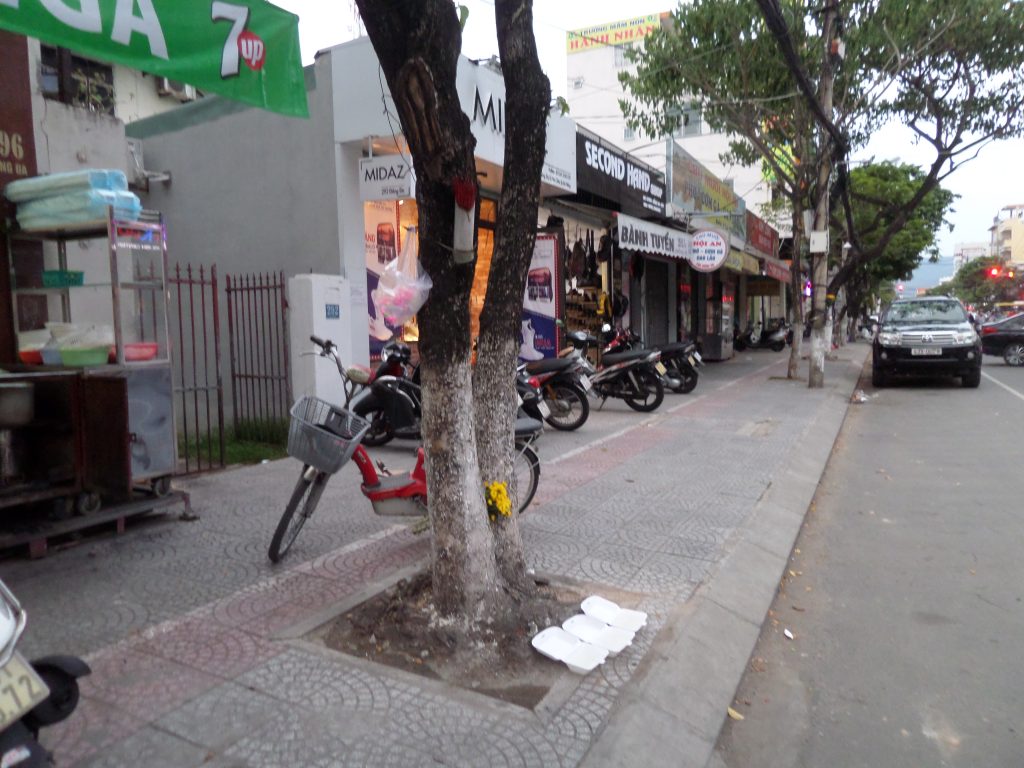
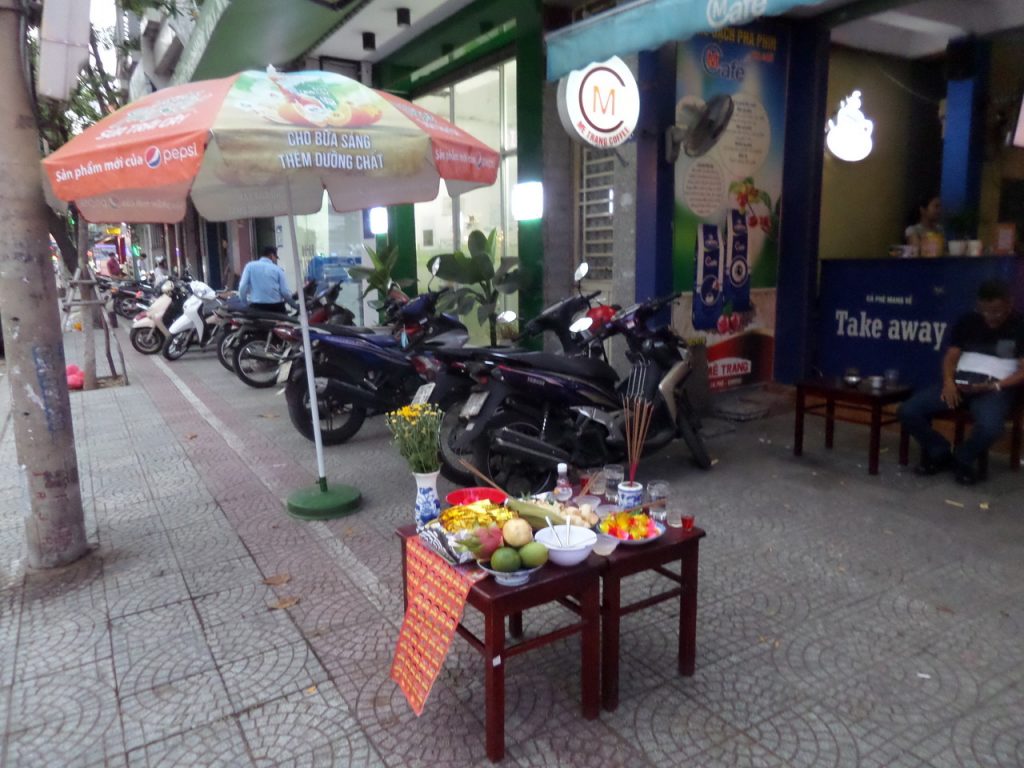
10. Visa: 9
Most nationalities need a visa to enter Vietnam, but the procedure is simple. You need to request pre-approval letter first, which can be arranged by a number of private Vietnamese agencies, and you can arrange it online. In most cases, you will get the letter the same day, sometimes within hours. You then need to present the printout when you arrive, and you can buy your visa.
The maximum length of stay is 3 months, and as far as I know, you can actually come back as soon as you can if you have the pre-approval letter again.
11. Overall impression: 8
Da Nang was one of my favourite cities to stay in as a digital nomad. It is a nice city with beautiful architecture in the centre, with lots of cafés and good prices. The only real problem I had was related to communication. If you don’t speak Vietnamese, you are not likely to be able to talk to a lot of local people – or at all! Locals are not likely to speak English – or any other foreign language for that matter. And this is a pity, because otherwise you could see that local people are very nice, and it would’ve been great to be able to talk to them. I still give it 8 points out of ten, because Da Nang is a city that I will definitely return to some time in the (near) future.
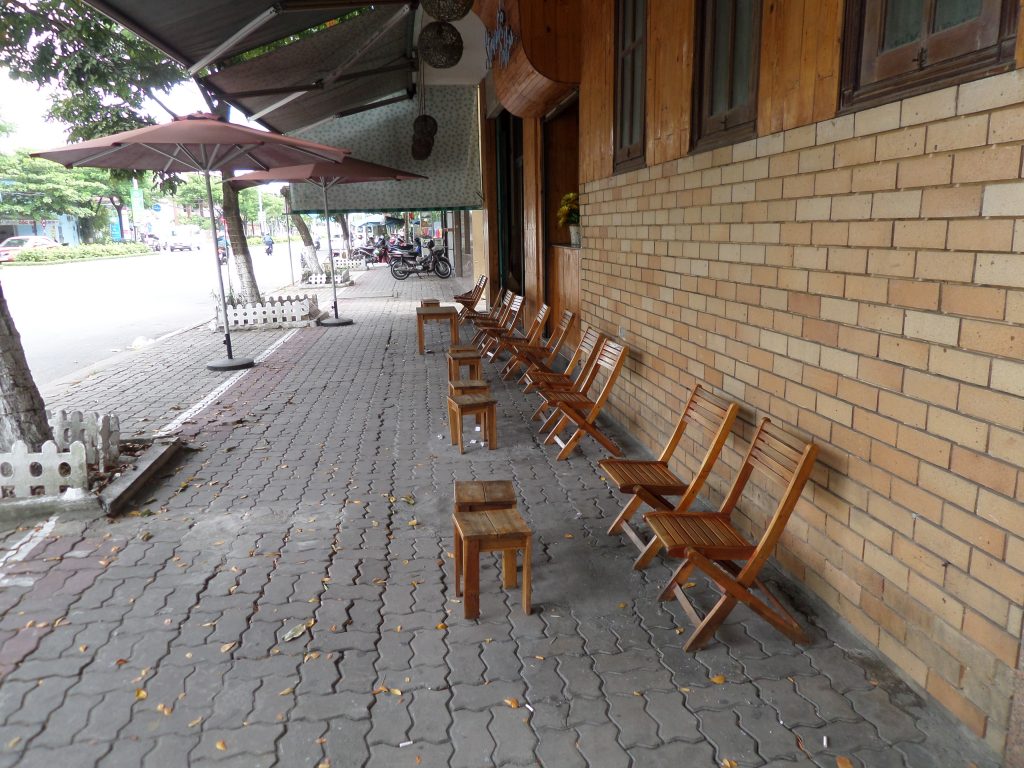
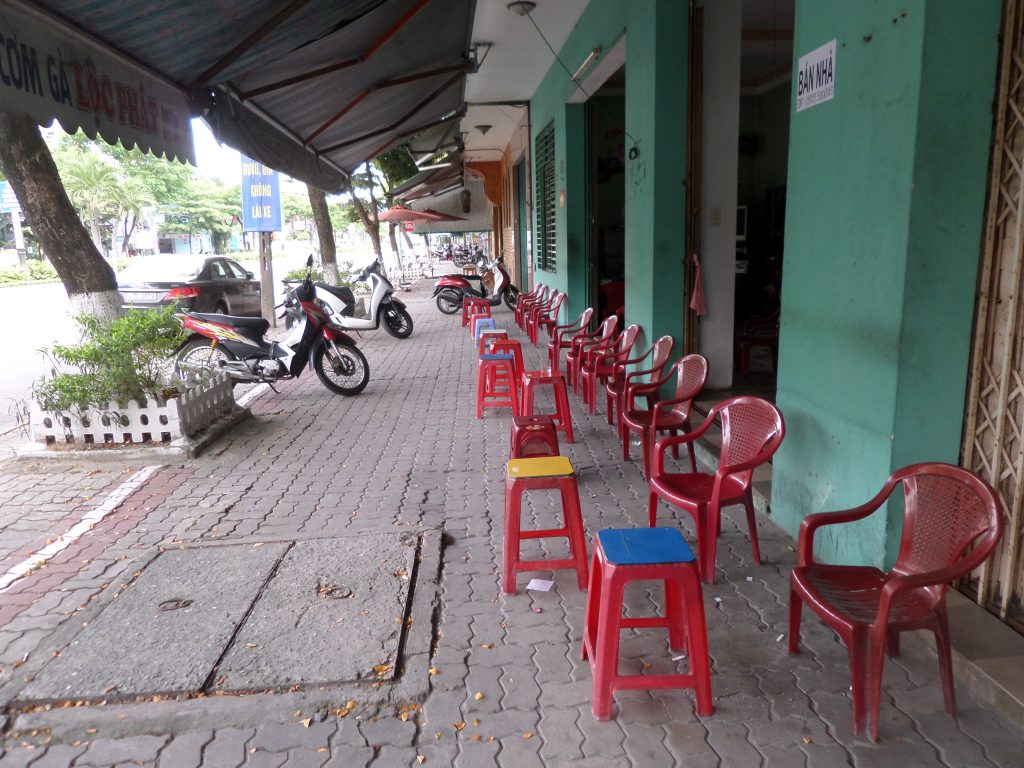
12. Practical info
12.1 Getting there and away
Da Nang has an international airport, which is so near the city centre that you can actually walk there from some of the hotels nearby. When I arrived, I did walk to my hotel from the airport with my backpack. Anyway, no trip to and from the airport should take very long.
Da Nang is also connected to most cities in Vietnam by the major railway line that runs between Hanoi and Ho Chi Minh City.
12.2 Accommodation in Da Nang
I stayed in a room that I found on Airbnb. Although it was advertised as a room (with ensuite bathroom), it was practically like an entire apartment. It was on the top floor of a huge house of a family. I had almost the entire top floor to myself, including the large rooftop terrace.
At the beginning, I also spent a few days in the King Garden Hotel, because my Airbnb room was only available later than I arrived. The hotel was very good, reasonably priced, with good wifi (had to reconnect every now and then though), and it was very near the centre of the city. There are quite a lot of nice hotels and guesthouses in the centre, which could also be used as your temporary home. Check them out below:
Booking.com
